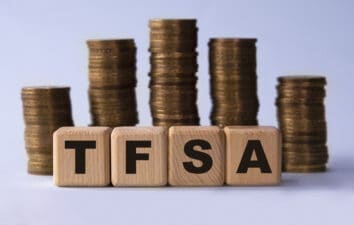Before we get going, let me clarify the title: by “no one,” I mean retail investors—there’s always some institutional savant out there who saw it coming.
The surprise? It wasn’t a high-profile fraud, meme stock drama, or crypto implosion. It was long-term Canadian government bonds continuing to underperform in 2024, extending the misery of 2023 and the brutal 2022 bear market when inflation and rising rates delivered a double whammy.
Why was this a surprise? Many retail investors assumed that with the Bank of Canada cutting rates aggressively, this type of bond would stage a comeback. While the rate cuts materialized, the rally in long-term bonds never followed. Here’s why.
Why long-term bonds didn’t perform well
Let’s use BMO Long Federal Bond Index ETF (TSX: ZFL) as our case study—a popular pick for retail investors, with over $3.6 billion in assets under management.
ZFL carries an AAA credit rating, backed by the Canadian federal government. Despite budget deficits and some questionable policy decisions, Canada remains a reliable lender (for now).
However, this isn’t a “safe” ETF by any means—credit risk may be negligible, but its interest rate risk is significant. As of December 9, 2024, ZFL’s weighted average duration was 18.06 years.
A simple (though not perfect) way to understand this is: for every 1% decrease in interest rates, ZFL’s net asset value (NAV) should rise by roughly 18.06%, all else being equal.
Many retail investors latched onto this concept in 2024, expecting jumbo rate cuts from the Bank of Canada to send long-term bond prices soaring. However, this analysis was overly simplistic. While the rate cuts materialized, ZFL didn’t deliver the anticipated gains.
The policy interest rate—the short-term rate directly controlled by the Bank of Canada—was indeed cut aggressively, but long-term bond yields remained elevated, keeping long-term bond prices depressed.
Why? Long-term yields reflect more than just central bank policy. Steady economic growth, ongoing government borrowing and deficits, and sticky inflation expectations all contributed to keeping long-term yields higher than expected.
What to buy instead
While long-term bonds have been a rough ride for price appreciation, their high volatility can actually work in your favour if you focus on passive-income generation. One way to do this is by using derivatives like covered calls, which turn volatility into options premiums (cold hard cash).
A great example of this strategy is Hamilton U.S. T-Bill Yield Maximizer ETF (TSX:HBIL).
This ETF is a barbell strategy in action: it combines the stability of U.S. Treasury bills (T-bills) with the income-generating potential of long-term U.S. Treasury bonds, augmented by covered calls.
Here’s how it works: 80% of HBIL’s portfolio is allocated to an ETF holding ultra-safe U.S. T-bills. These short-term government securities are essentially risk-free and provide a stable source of monthly interest income. The remaining 20% is invested in a long-term Treasury ETF with an average maturity of around 20 years.
To boost income further, HBIL sells covered calls on the long-term Treasury ETF portion of the portfolio. This means the ETF captures premium income by selling the upside potential of these volatile bonds.
The result? A steady monthly distribution combining the safety of T-bills with the yield enhancement of covered calls on longer-dated Treasurys. 80% of the ETF is as safe as it gets, while the remaining 20% is structured to harvest income from risk.
As of December 10, 2024, HBIL was yielding an impressive 7.45%—a balance of stability and higher income that’s tough to find elsewhere in today’s bond market.








